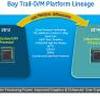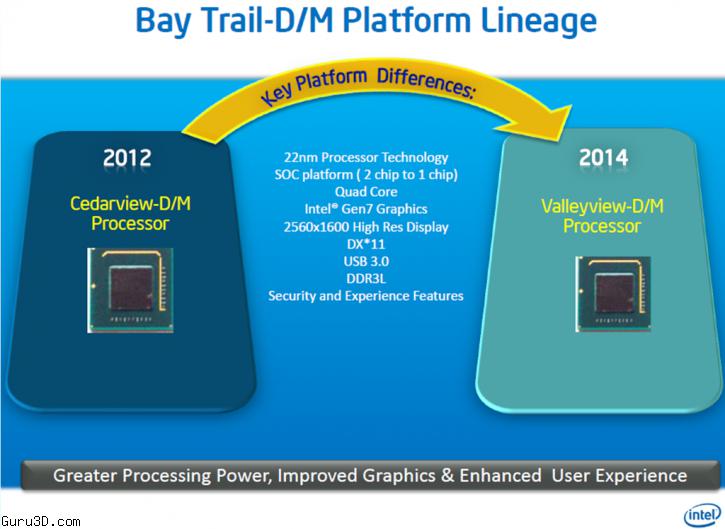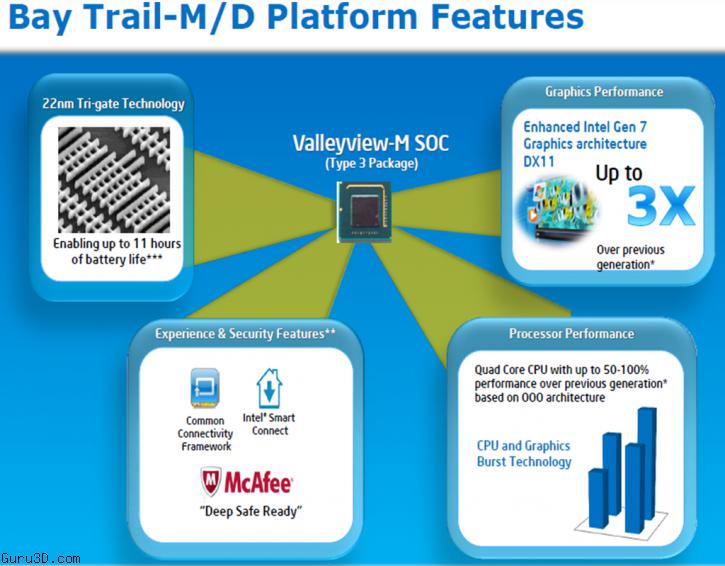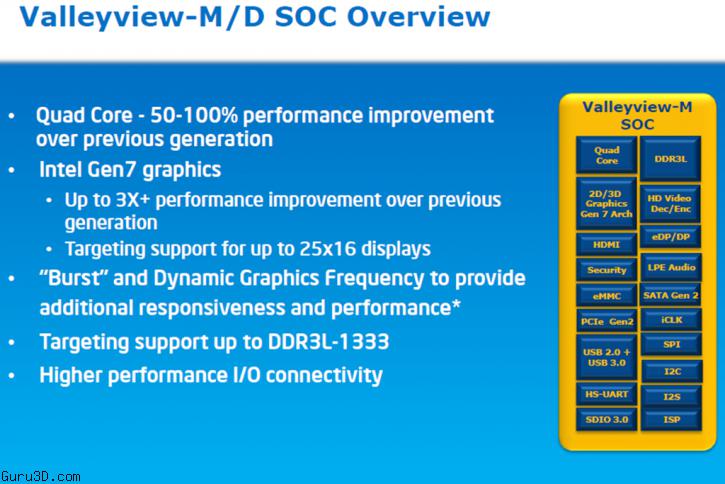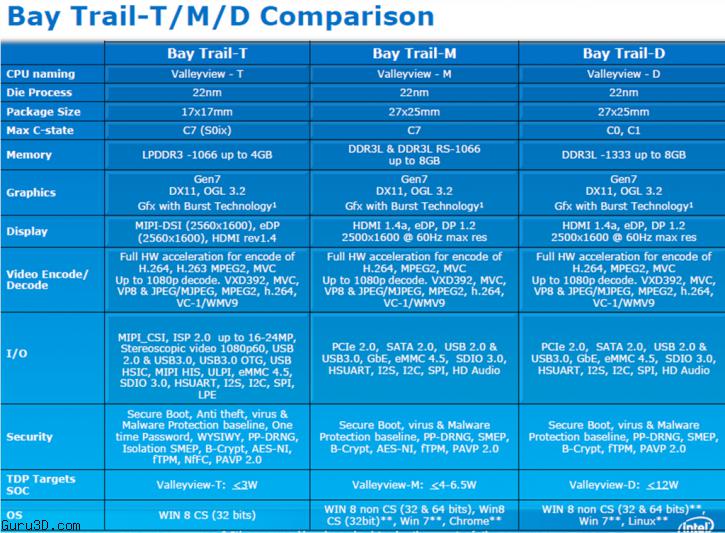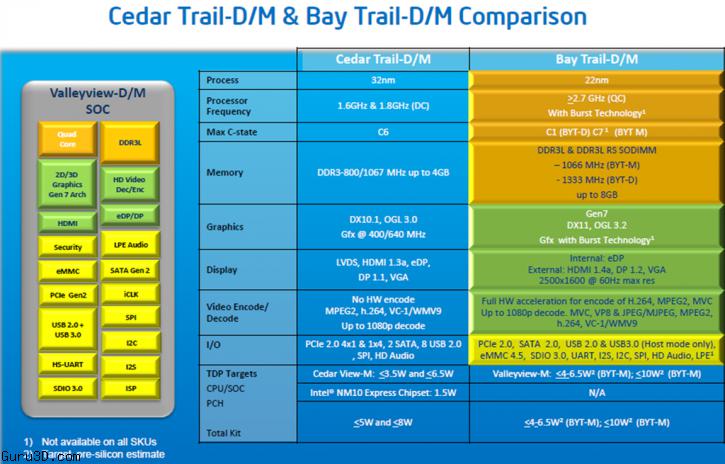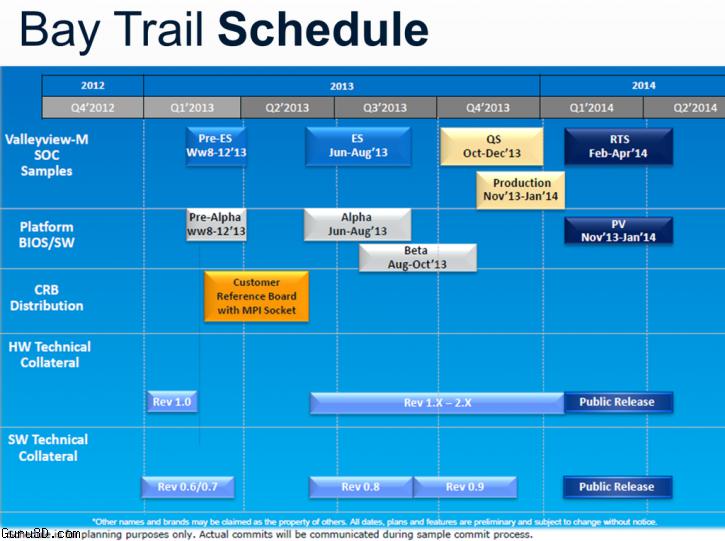It is true that the topic we'll discuss right now isn't due for release until late 2013 or early 2014, but a German website put a bunch of press slides online on Intel Bay Trail Platform that disclose a lot of information alright. The Bay Trail Atom Platform will compete with ARM products in the Tablet/netbook/nettop space, yet also AMD's Kabini (28nm, quad-core, which will likely launch in the middle of this year). Intel Bay Trailis based on new 22nm architecture, instead on the 32nm one. The Bay Trail-T has also doubled the amount of cores and now stays at 4 x86-64 cores, but without hyper-threading.
The difference is quite significant, as the gained performance boost is around 50-60%. The CPU is clocked at 2,1GHz, as opposed to 1,5GHz on the old-gen chipset. The new platform also supports LPDDR3 RAM, which results in higher bandwidth speeds.
Next comes the GPU. It’s an Intel 4000 series GPU that’s found inside, which is a very big improvement over the old PowerVR SGX545 found on the Clover Trail. It offers huge performance improvements, as well as DirectX 11 support, which gives developers a chance to develop on the highly-popular game engine. For a wide spectrum of display support the SoC will supports all resolutions up to 2560×1600, and can process 1080p 3D videos at 60fps.
The new tablets based on the architecture will get a better battery life compared to the old silicon. The battery life is rated at 11+ hours. The 22nm silicon will be a strong competitor for AMD's Kabini (28nm, quad-core, expected to launch by the middle of this year) as well as ARM designs based on the Cortex-A15. They'll also flatten Atom's previous performance.
Anyway have a look at the slides there's some really good stuff in there.
Intel Bay Trail Platform and Valleyview Atom SoC Surface
